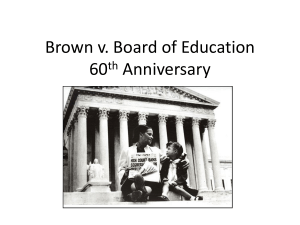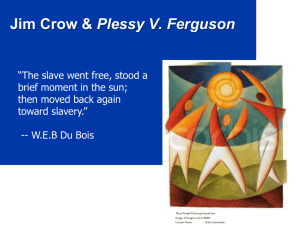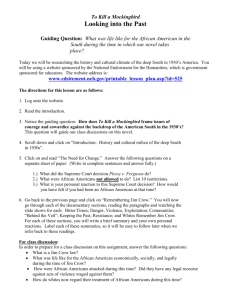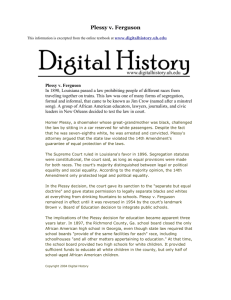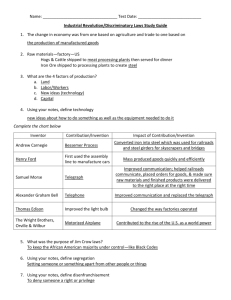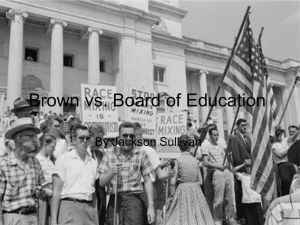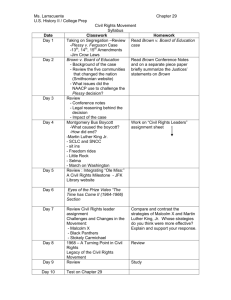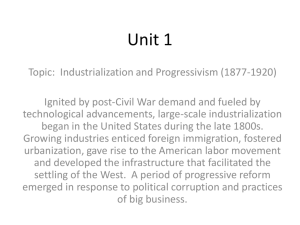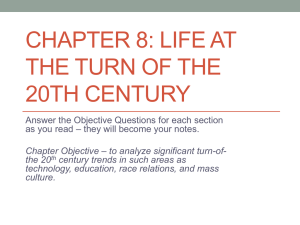SS8H7b TSW evaluate key political, social, and economic changes
advertisement
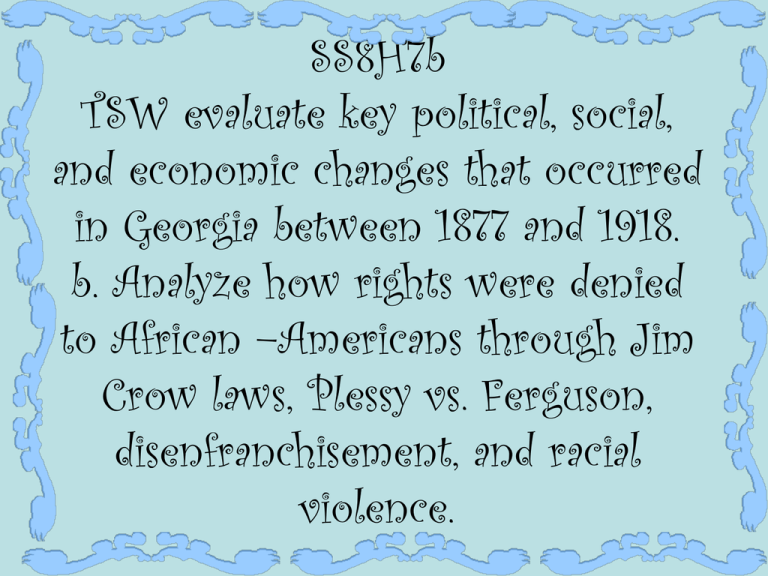
SS8H7b TSW evaluate key political, social, and economic changes that occurred in Georgia between 1877 and 1918. b. Analyze how rights were denied to African –Americans through Jim Crow laws, Plessy vs. Ferguson, disenfranchisement, and racial violence. Jim Crow Laws These laws were passed to establish “separate, but equal” facilities for whites and for blacks. The laws resulted in separate restrooms, water fountains, railroad cars, waiting rooms, lodging facilities, dining areas and schools. In 1889, the Georgia General Assembly segregated (separated by race) a number of public facilities including theaters, prison camps, water fountains and restrooms. Although facilities for African Americans were separate, they were rarely equal to those set aside for whites. African Americans protested the Jim Crow laws in public meetings throughout the nation. Georgia’s Henry McNeal Turner, a bishop of the AME church, called the new civil rights laws and the segregation that followed “barbarous.” Plessy vs. Ferguson In 1892, Homer Plessy bought a train ticket back from New Orleans to Covington, Louisiana. Because he was 7/8ths white and 1/8th black, he took a seat in the “whites only” car. When he refused to move, he was arrested under the “Jim Crow Car Act of 1890,” which required separate-but-equal accommodations for whites and blacks on railroad cars. Plessy staged the incident to test the constitutionality of the 1890 law. In 1896, the U.S. Supreme Court heard the case and, by a 7-1 vote, upheld the law. A southerner, Justice John Marshall Harlan, cast the single dissenting vote. Dissenting vote: one by which the voter signifies that s/he does not agree with the proposition. Plessy vs. Ferguson gave states the right to control social discrimination and to promote segregation. Throughout the South, numerous laws segregated such facilities as parks and public transportation. Schools soon followed. Plessy was soon tested by a case originating in Augusta. Until 1899, Richmond County had the only public high school in Georgia for descendants of enslaved Africans. The school board, supposedly for “purely economic reasons,” closed the school, which served 60 high school students, and opened it as an elementary school for 300 students. Three parents sued the school board based on the Plessy decision that ensured separatebut-equal facilities. They filed for an injunction (a court order stating that something must be done or not done) asking that the white public high school be closed until another high school was open for African American students. The lower court agreed, but the Georgia Supreme Court overturned that ruling. The court ruled that: (1) African American students had the right to be educated only until the 8th grade, (2) closing the white high school did not relate to the equal rights granted by the 14th Amendment, and (3) The use of funds to open the elementary school and close the high school was a state issue. It was not until 1954 with the Brown vs. Board of Education ruling that segregated schools became unlawful. Disenfranchisement By 1900, almost 12% of African America in the nation lived in Georgia, making up about 47% of the states population. More and more, however, these citizens found themselves pushed aside and without political power. African American leaders began to speak out, but law after law was passed with the sole purpose of keeping them from voting.
